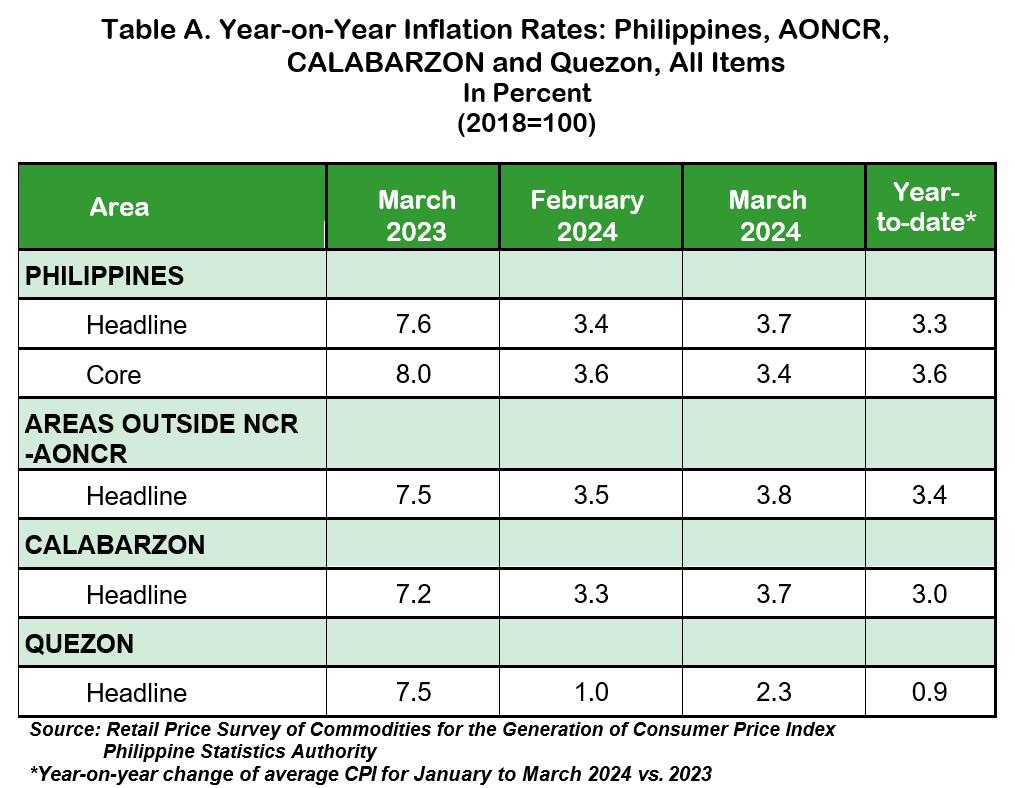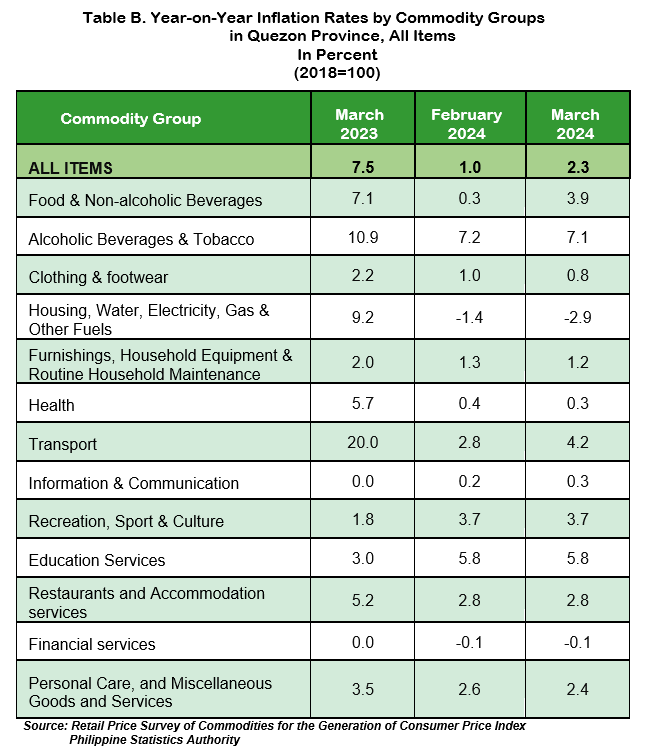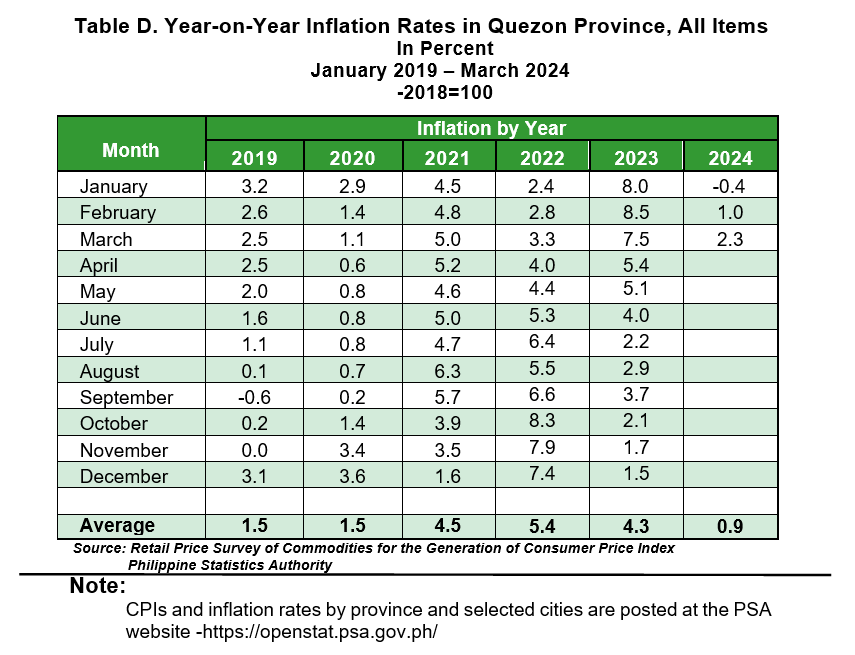

The headline inflation or overall inflation in Quezon further increased to 2.3 percent in March 2024, from 1.0 percent in February 2024. This brings the average inflation rate of the province for the first three months of the year to 0.9 percent. In March 2023, inflation rate was higher at 7.5 percent.
The continued upward movement in the overall inflation in March 2024 was primarily influenced by higher year-on-year increase in the heavily-weighted food and non-alcoholic beverages at 3.9 percent during the month, from 0.3 percent in February 2024. In addition, the higher annual increments in the indices of transport at 4.2 percent in March 2024, from 2.8 percent in the previous month; and information and communication at 0.3 percent during the month, from 0.2 percent in February 2024 contributed to the uptrend.
In contrast, the following six commodity groups registered lower inflation rates during the month:
a. Alcoholic beverages and tobacco at 7.1 percent, from 7.2 percent;
b. Clothing and footwear at 0.8 percent, from 1.0 percent;
c. Housing, water, electricity, gas and other fuels at -2.9 percent, from -1.4 percent;
d. Furnishings, household equipment and routine household maintenance at 1.2 percent, from 1.3 percent;
e. Health at 0.3 percent, from 0.4 percent; and
f. Personal care, and miscellaneous goods and services at 2.4 percent, from 2.6 percent.
Meanwhile, the following commodity groups retained their previous month’s inflation:
a. Recreation, sport and culture at 3.7 percent;
b. Education services at 5.8 percent;
c. Restaurants and accommodation services at 2.8 percent; and
d. Financial services at -0.1 percent.


Food inflation in the province rose to 4.0 percent in March 2024, from 0.0 percent in February 2024. In March 2023, food inflation was higher at 7.3 percent.
The acceleration in food inflation was mainly brought about by the higher year-on-year increase in the index of rice at 16.6 percent in March 2024, from 8.2 percent percent in the previous month. It was followed by annual increase in the index of meat and other parts of slaughtered land animals at 3.7 percent during the month, from an annual decline of 2.8 percent in February 2024;
Likewise, higher inflation rates on the following food groups also contributed to the increase of food inflation during the month:
a. Corn at 6.0 percent, from 1.9 percent;
b. Oils and fats at -7.6 percent, from -8.8 percent;
c. Vegetables, tubers, plantains, cooking bananas and pulses at 1.3 percent, from -12.2 percent; and
d. Sugar, confectionery and desserts at -3.2 percent, from -3.8 percent.
In contrast, the inflation of the following food groups decreased during the month:
a. Flour, bread and other bakery products, pasta products, and other cereals at 3.6 percent, from 3.7 percent;
b. Fish and other seafood at -4.1 percent, from -1.8 percent;
c. Milk, other dairy products, and eggs at -2.3 percent, from -1.9 percent;
d. Fruits and nuts at 7.1 percent, from 9.3 percent; and
e. Ready-made food and other food products not elsewhere classified at 3.4 percent, from 3.7 percent.

(SGD.) AIRENE A. PUCYUTAN
Provincial Statistics Officer
PSA Quezon
NDP/IJCA/EAD
